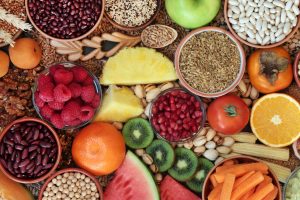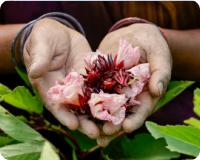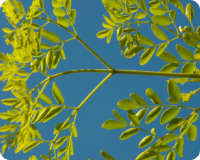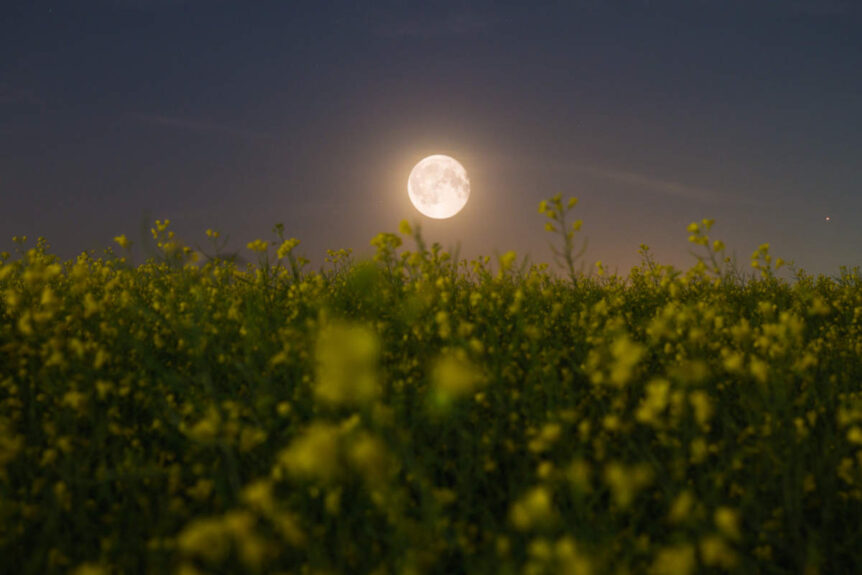

Section

Back
If you’ve ever hand-picked fresh green peas straight off the vine and relished in their crisp, sweet flavor or walked through a raspberry patch full of plump red raspberries and the sound of buzzing bees, you understand the lure of gardening. Expert gardeners know just how to till the earth and nurture tender seedlings to produce a healthy plant. They also know that just as the sun and rain affect their growing garden, so does the moon.
Gardening by the moon is a growing trend seen among gardeners who endeavor to work with Mother Nature to raise a thriving, productive garden. Although the technique of planting by the moon has seen a resurgence recently, this time-honored method is anything but new. People from many cultures and civilizations have been planting and harvesting according to the moon’s phases for millennia.
What Is Gardening by the Moon?
If you’re new to gardening, you may wonder what gardening by the moon is and what the moon has to do with growing a healthy garden that produces an abundant harvest.
Gardening by the moon, also called moon phase gardening, is an approach to gardening that takes into account how lunar cycles affect the growth of plants. The technique is actually very simple:
- Plant annuals, fruits, vegetables, and other crops that bear fruit above ground during the waxing moon phases – from the new moon until the full moon.
- Plant perennials, flowering bulbs, and root vegetables during the waning of the moon. This phase starts from the day after the full moon and goes until the day before it is new again.
We’ll go into more detail about how to tend your garden through the phases of the moon in a minute, but first, let’s dive into a bit of the history of gardening by the moon.
History of Gardening by the Moon
There’s nothing more awe-inspiring than a beautiful, bright full moon looming just overhead – seemingly so close you could reach out and wrap your arms around it. This magnificent globe has long been an object of mystery and wonder, holding a venerated place in ancient and modern civilizations.
For as long as mankind has been cultivating crops, lunar gardening has played a significant role in knowing when to plant and when to harvest. From the ancient Egyptians who planted their crops in the fertile soil of the Nile Delta, to the Mayan Indians in Mesoamerica who planted extensive water gardens, they looked to the phases of the moon as they tended their crops.
Ancient Ayurvedic practices encourage a balance between the elements, giving careful consideration to the interaction between earth, sun, water, and air. In Ayurveda, gardening and raising herbs are approached with a reverence for nature. What better way to harmonize with the rhythms of nature than to plant gardens in tune with the phases of the moon?
The modern era of gardening by the moon is thought to have begun in the 1920s with Rudolf Steiner. He was an Austrian philosopher who gave a series of lectures on the idea that the moon, the sun, the planets, and stars all influenced flora and fauna.
He was followed by many others who experimented with planting by the moon phases to determine how the lunar orb affected plant growth and flavor. While we may not have clear scientific evidence as to why planting by the moon works, we do have centuries of anecdotal evidence that suggests it does. That being said, perhaps science just needs a little more time to catch up with a proven method people for generations have lived and thrived by.
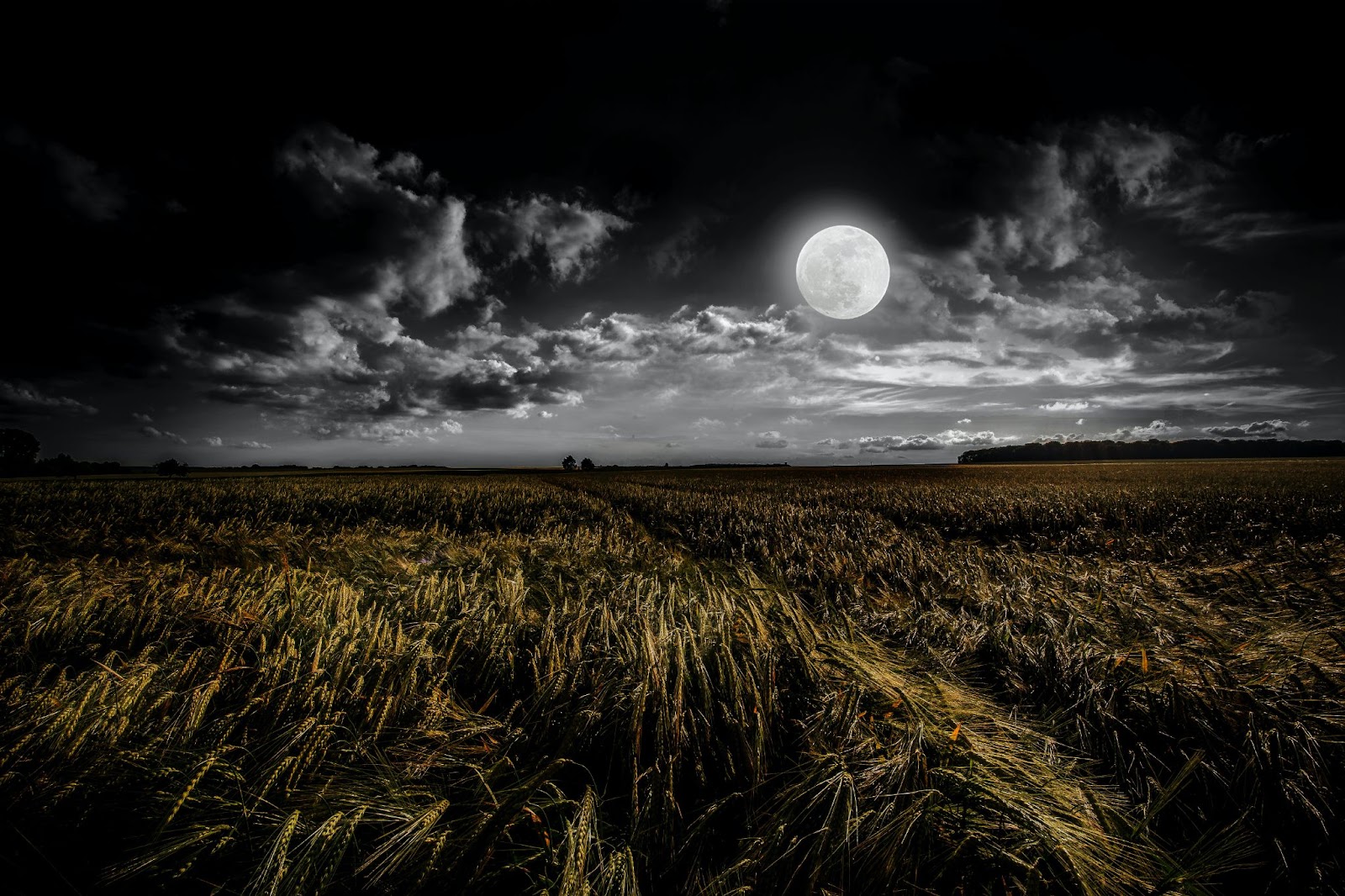
How Does Moonlight Impact Gardening?
Even though the moon seems like it shines with a glow from within, the moon doesn’t have its own source of light. Instead, the moonlight we see is the result of sunlight reflecting off the moon’s surface.
The amount of moonlight reflected to the Earth during its different phases influences the growth of plants. During the waxing phase, moonlight increases and stimulates new growth. Plants may seem to shoot up overnight, adding new leaves and flowers. During the waning phase, the above-ground growth slows down allowing more energy to flow to the roots. This is the best time to plant bulbs and root crops.
As the moon orbits the earth, it creates a gravitational pull that is responsible for the rise and fall of ocean tides. That same invisible force works on the dry land to bring more moisture to the surface of the soil, thus promoting plant growth. During the waxing phase, water is pulled closer to the surface, allowing more moisture to be available to plants. With more water, seeds swell and germinate faster, producing a more robust and hardy seedling.
Does Gardening by the Moon Work?
Ancient civilizations were in tune with nature and understood that the success of their crops depended on elements from both the heavens and the earth. In modern times, gardeners have learned that these ancient practices have merit. Through experiments and research by gardeners worldwide, we’ve learned what the ancients knew – that plant germination, growth, and yield is affected by the different phases of the moon.
The gravitational pull of the moon draws more moisture to the surface, allowing seeds and roots to absorb more water for growth. During the waxing moon phase, as moonlight increases, leaf growth is stimulated. Let’s take a closer look to see which phase is best for planting and harvesting.

What Moon Phase Is Best for Planting?
The moon has four main phases that each last about seven days – making the complete lunar cycle about 29 days long. Each phase of the moon affects gardening in different ways. Throughout the month, as the moon goes through its different phases, there are optimal days for planting different types of crops, as well as best days to harvest, prune, add organic fertilizer, and cultivate your garden.
New Moon to Waxing Moon Phases
The first phase of the moon’s orbit is the new moon which occurs when the moon is between the sun and the Earth. The surface of the moon appears dark because the sunlight is shining on the side of the moon that faces away from the Earth.
During the waxing phase, the new moon gets bigger and becomes more visible. This is the best time to plant fruits and vegetables that bear crops above ground like tomatoes, peas, peppers, watermelon, pumpkin, and squashes. Herbs like basil and mint should also be planted during this phase. The waxing moon phase is the best time to prune your plants and use liquid fertilizers.
Full Moon to Waning Moon Phases
A full moon happens when the moon is on the opposite side of the Earth from the sun, allowing the full face of the moon to be illuminated. The light from the sun bounces off the surface of the moon, producing a bright glow at night. The waning moon phase begins after the full moon. During this phase, the illuminated area of the moon is decreasing, giving off less light at night.
After the full moon, growing energy starts to shift away from the leaves and flowers. With the decreasing moonlight, plants are encouraged to focus on root growth. This makes the waning phase the best time to plant root vegetables like carrots, potatoes, beets, and turnips as well as flowering bulbs and perennial flowers. Herbs like ginger and garlic should also be planted during this phase.
The best time to harvest vegetables is just after the full moon. Moon phase gardeners have found that vegetables harvested at this time will store longer. If you’re harvesting herbs, harvest them during the last phase of the waning moon. This is when the fluids are drawn down to the roots, making the plants easier to dry. The waning moon phase is also a good time to divide plants and take cuttings, and improve your soil by fertilizing, weeding, and mulching.
Gardening by the Moon Is a Tradition
At Organic India USA, we use gardening by the moon as part of our ancestral regenerative agricultural practices in India. With every crop cycle, we work with nature’s rhythms to improve the nutrition of the plant, as well as plant yield. Planting and growing herbs by the phases of the moon is just one way we seek to fulfill our mission for healthy, conscious living.
Shop our herbal teas and supplements here.
